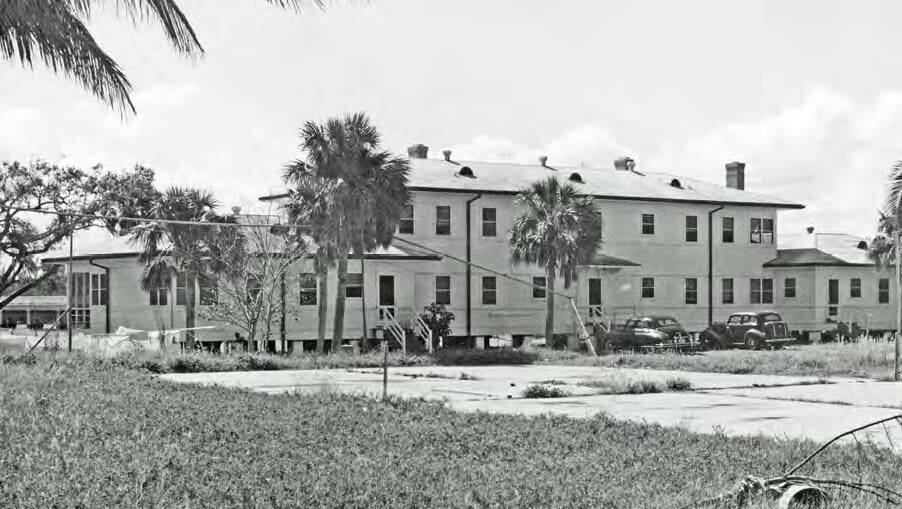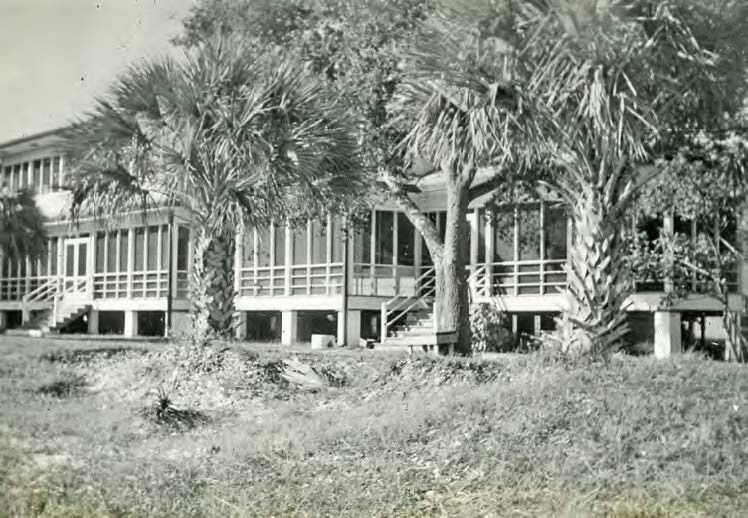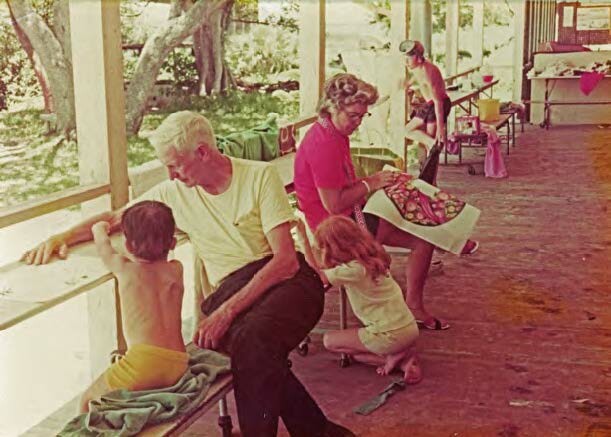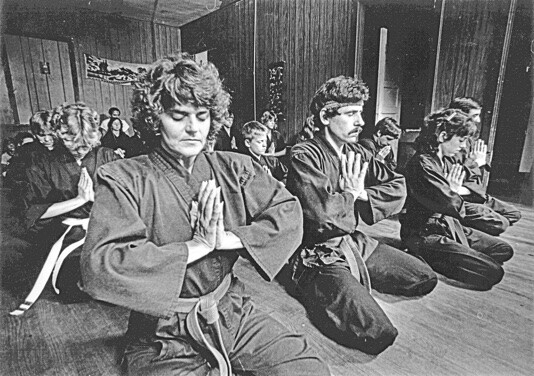The Secret Legacy of Station J at the Jupiter Inlet Lighthouse & Museum
![]() 5 min read
5 min read
Hidden in the scenic beauty of Palm Beach County, Florida, the Jupiter Inlet Lighthouse isn’t just a navigational beacon; it’s a gateway to a secret past filled with wartime intrigue and innovation. Let’s journey back to World War II and uncover the fascinating story of Station J.

The Married Men’s Quarters in 1950. The abandoned tennis court in foreground was built for Navy and Marine Corps personnel during World War II. (Coast Guard Historian’s Office)
The Genesis of Station J
Imagine the Florida coast in the early 1940s. The serene beauty of the Jupiter Inlet masked the dangers lurking offshore. German U-boats prowled these waters, turning them into treacherous hunting grounds for Allied ships. The need for decisive action was palpable, and thus, Station J was born.
Station J wasn’t just any military installation. Officially known as U.S. Naval Supplementary Radio Station Jupiter, this covert operation was designed to counter the U-boat threat. Utilizing high-frequency direction-finding technology, or “Huff Duff,” Station J intercepted and triangulated enemy transmissions. This intelligence was a game-changer, enabling Allied forces to strike U-boats with precision, disrupting their dominance in the Atlantic.
The Importance of Station J
Station J was a secret operation that intercepted U-boat radio messages and tipped off U.S. forces to attack enemy vessels. With radio receivers tuned to the frequencies used by the U-boats, Station J was able to pinpoint the names and locations of the submarines. Despite its small size, Station J played a crucial role in the war effort.
The building was constructed in 1939 and was used throughout the war. The Married Men’s Quarters housed senior radiomen and their families, providing a semblance of normalcy amidst the chaos of war. Each of the six apartments featured two bedrooms, a kitchen, a living room with a fireplace, and access to a screened porch facing the Loxahatchee River.

The Married Men’s Quarters as it appeared during use by DF Station Jupiter (1945-1947). Photo by CWO Otto Freytag, station commander.
The Evolution of Station J: A Legacy of Transformation and Resilience
The story of Station J is one of transformation and resilience, marked by its evolving role through various hands and purposes over the years. As World War II drew to a close, the U.S. Navy transferred Station J to the Coast Guard on July 15, 1945. This shift marked a new chapter for the facility, which was repurposed to assist in locating distress signals and aiding rescue operations. The Married Men’s Quarters continued to serve as family housing during this period, maintaining its role as a supportive home base for military families.
In the early 1950s, the U.S. Air Force took over the building, incorporating the former Station J into the Jupiter Auxiliary Air Force Base. This base played a critical role in tracking missile tests from Cape Canaveral, with most of the equipment located on the north side of the lighthouse reservation. During this time, the building served a mix of purposes, including family housing, bachelor barracks, and classroom space. The Air Force contracted range operations to PanAm in 1954, continuing the use of the former radio station buildings until at least 1958.

A summer camp scene at Jupiter Inlet Marine Science Center in the mid-1970s. Courtesy of the Webb Family.
From Military Quarters to Community Center
During the 1960s, the Coast Guard considered demolishing the Married Men’s Quarters to make way for new single-family housing along the riverfront. However, local leaders like Jupiter Mayor Robert F. Culpepper and Mayor Robert J. Nichols lobbied to save the building, recognizing its historical significance. Their efforts led to the creation of Lighthouse Park in 1968, with the building preserved and repurposed for community use.
By 1969, various civic groups had begun using the building. The east wing served as the offices and dispatch center for the North County First Aid Squad, which moved out in 1973. The wing then housed a senior club before becoming the Lighthouse Visitor Center in 1994 under the Loxahatchee River Historical Society’s management. The west wing hosted local organizations like the Jaycees and later served as a karate dojo, where Sensei Chuck taught classes by donation.

Chuck Derderian’s karate dojo in the 1980s. Photo by Bob Shanley.
Preserving History at the Jupiter Inlet Lighthouse & Museum
The Jupiter Inlet Lighthouse & Museum’s exhibits offer a glimpse into the lives of those who lived and worked here during the war, making history come alive for visitors.
Today, the Jupiter Inlet Lighthouse & Museum stands as a custodian of this rich history. The museum building itself, once the Married Men’s Quarters, is a tangible link to the past. It is a place where visitors can explore exhibits and learn about the significant role that Station J played during World War II. The Florida State Historic Marker, dedicated in 2007, commemorates the building and its wartime significance, ensuring that the stories of those who served there are not forgotten.
Conclusion: A Legacy Remembered
The story of Station J is a compelling chapter in the history of Jupiter Inlet Lighthouse & Museum. It is a story of innovation, bravery, and resilience, set against the backdrop of a world at war. We honor the legacy of those who served at Station J and the community that has grown around this historic site. Their contributions have left an indelible mark on the region, and their stories continue to inspire future generations. Together, we can ensure that the stories of Station J and its significance during World War II remain a vital part of our shared heritage.
FAQs
What was the primary purpose of Station J during World War II?
Station J was established to intercept and triangulate the radio transmissions of German U-boats, providing critical intelligence that helped Allied forces locate and attack enemy submarines.
What type of technology did Station J use?
Station J utilized high-frequency direction-finding (HF/DF) technology, also known as “Huff Duff,” to intercept and pinpoint the locations of U-boat radio transmissions.
How many personnel were stationed at Station J at its peak?
At its peak in 1943, Station J housed 95 Navy personnel and 11 Marines.
What happened to Station J after World War II?
After the war, Station J was transferred to the Coast Guard, which continued to use the site for peacetime operations until its closure around 1948
What is the current use of the Station J building?
The Station J building now serves as the Jupiter Inlet Lighthouse & Museum, preserving and interpreting the history of the site and the region.
